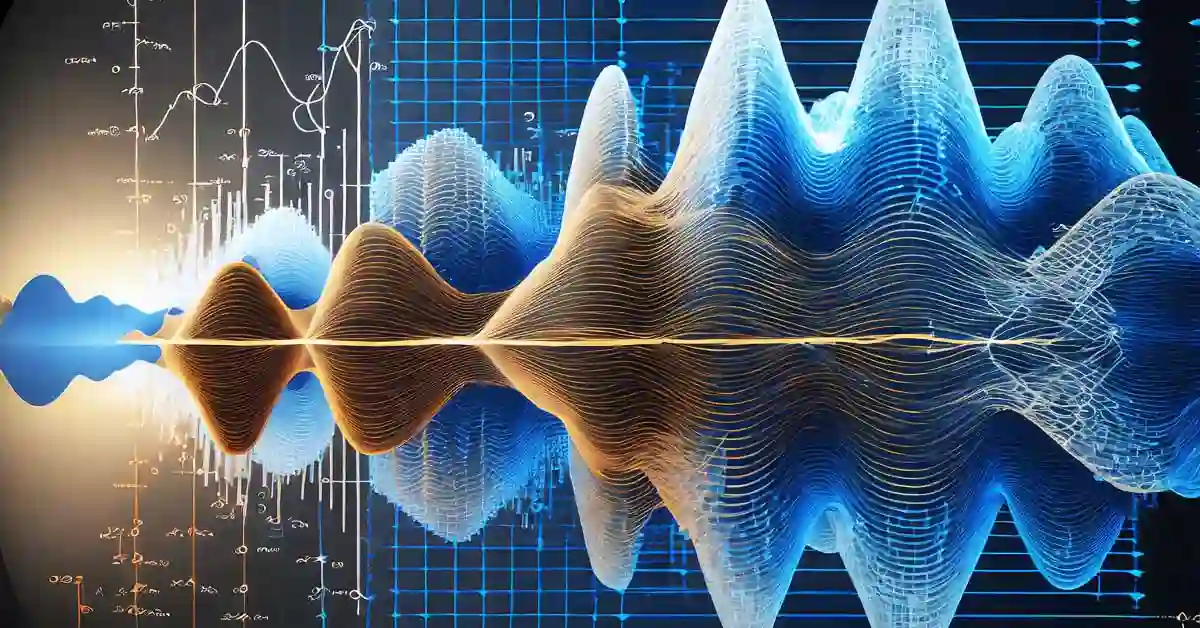[{"id":3150,"link":"https:\/\/whitenoiseacoustics.in\/importance-of-acoustic-treatment-in-home-theaters\/","name":"importance-of-acoustic-treatment-in-home-theaters","thumbnail":{"url":"https:\/\/whitenoiseacoustics.in\/wp-content\/uploads\/2024\/05\/The-Importance-of-Acoustic-Treatment-in-Home-Theaters.webp","alt":"The-Importance-of-Acoustic-Treatment-in-Home-Theaters"},"title":"The Importance of Acoustic Treatment in Home Theaters","excerpt":"Welcome to the immersive world of home theaters, where every frame, every note, and every whisper transports you into a realm of cinematic bliss.","content":"Introduction Welcome to the immersive world of home theaters, where every frame, every note, and every whisper transports you into a realm of cinematic bliss.","author":{"name":"Mukesh Ranjan","link":"https:\/\/whitenoiseacoustics.in\/author\/mukesh\/"},"date":"May 7, 2024","dateGMT":"2024-05-07 11:46:57","modifiedDate":"2024-05-07 13:52:25","modifiedDateGMT":"2024-05-07 13:52:25","commentCount":"0","commentStatus":"open","categories":{"coma":"<a href=\"https:\/\/whitenoiseacoustics.in\/category\/acoustic-treatment\/\" rel=\"category tag\">Acoustic Treatment<\/a>, <a href=\"https:\/\/whitenoiseacoustics.in\/category\/blog\/\" rel=\"category tag\">Blog<\/a>, <a href=\"https:\/\/whitenoiseacoustics.in\/category\/home-theatre\/\" rel=\"category tag\">Home Theatre<\/a>","space":"<a href=\"https:\/\/whitenoiseacoustics.in\/category\/acoustic-treatment\/\" rel=\"category tag\">Acoustic Treatment<\/a> <a href=\"https:\/\/whitenoiseacoustics.in\/category\/blog\/\" rel=\"category tag\">Blog<\/a> <a href=\"https:\/\/whitenoiseacoustics.in\/category\/home-theatre\/\" rel=\"category tag\">Home Theatre<\/a>"},"taxonomies":{"post_tag":"<a href='https:\/\/whitenoiseacoustics.in\/tag\/acoustic-boards\/' rel='post_tag'>Acoustic Boards<\/a><a href='https:\/\/whitenoiseacoustics.in\/tag\/acoustic-panels\/' rel='post_tag'>Acoustic Panels<\/a><a href='https:\/\/whitenoiseacoustics.in\/tag\/acoustic-treatment\/' rel='post_tag'>Acoustic Treatment<\/a><a href='https:\/\/whitenoiseacoustics.in\/tag\/cinematic-experience\/' rel='post_tag'>Cinematic Experience<\/a><a href='https:\/\/whitenoiseacoustics.in\/tag\/home-audio\/' rel='post_tag'>Home Audio<\/a><a href='https:\/\/whitenoiseacoustics.in\/tag\/home-entertainment\/' rel='post_tag'>Home Entertainment<\/a><a href='https:\/\/whitenoiseacoustics.in\/tag\/home-theater\/' rel='post_tag'>Home Theater<\/a><a href='https:\/\/whitenoiseacoustics.in\/tag\/home-theater-acoustic-treatment\/' rel='post_tag'>Home Theater Acoustic Treatment<\/a><a href='https:\/\/whitenoiseacoustics.in\/tag\/noise-control\/' rel='post_tag'>Noise Control<\/a><a href='https:\/\/whitenoiseacoustics.in\/tag\/room-acoustics\/' rel='post_tag'>Room Acoustics<\/a>"},"readTime":{"min":8,"sec":42},"status":"publish"},{"id":3112,"link":"https:\/\/whitenoiseacoustics.in\/creating-a-comfortable-seating-arrangement\/","name":"creating-a-comfortable-seating-arrangement","thumbnail":{"url":"https:\/\/whitenoiseacoustics.in\/wp-content\/uploads\/2024\/04\/Creating-a-Comfortable-Seating-Arrangement-1.webp","alt":"Creating-a-Comfortable-Seating-Arrangement-1-in-a-home-theater"},"title":"Creating a Comfortable Seating Arrangement in a Home Theater","excerpt":"In the realm of home entertainment, crafting a sublime home theater experience is an art. While state-of-the-art audiovisual equipment is undoubtedly crucial, one element often overlooked is the process of creating a comfortable seating arrangement.","content":"Introduction In the realm of home entertainment, crafting a sublime home theater experience is an art. While the importance of acoustic treatment and state-of-the-art audiovisual","author":{"name":"Mukesh Ranjan","link":"https:\/\/whitenoiseacoustics.in\/author\/mukesh\/"},"date":"Apr 18, 2024","dateGMT":"2024-04-18 09:14:51","modifiedDate":"2024-05-07 12:23:05","modifiedDateGMT":"2024-05-07 12:23:05","commentCount":"0","commentStatus":"open","categories":{"coma":"<a href=\"https:\/\/whitenoiseacoustics.in\/category\/home-theatre\/\" rel=\"category tag\">Home Theatre<\/a>, <a href=\"https:\/\/whitenoiseacoustics.in\/category\/acoustic-treatment\/\" rel=\"category tag\">Acoustic Treatment<\/a>, <a href=\"https:\/\/whitenoiseacoustics.in\/category\/blog\/\" rel=\"category tag\">Blog<\/a>","space":"<a href=\"https:\/\/whitenoiseacoustics.in\/category\/home-theatre\/\" rel=\"category tag\">Home Theatre<\/a> <a href=\"https:\/\/whitenoiseacoustics.in\/category\/acoustic-treatment\/\" rel=\"category tag\">Acoustic Treatment<\/a> <a href=\"https:\/\/whitenoiseacoustics.in\/category\/blog\/\" rel=\"category tag\">Blog<\/a>"},"taxonomies":{"post_tag":"<a href='https:\/\/whitenoiseacoustics.in\/tag\/acoustic-treatment\/' rel='post_tag'>Acoustic Treatment<\/a><a href='https:\/\/whitenoiseacoustics.in\/tag\/cinematic-experience\/' rel='post_tag'>Cinematic Experience<\/a><a href='https:\/\/whitenoiseacoustics.in\/tag\/home-audio\/' rel='post_tag'>Home Audio<\/a><a href='https:\/\/whitenoiseacoustics.in\/tag\/home-entertainment\/' rel='post_tag'>Home Entertainment<\/a><a href='https:\/\/whitenoiseacoustics.in\/tag\/home-theater\/' rel='post_tag'>Home Theater<\/a><a href='https:\/\/whitenoiseacoustics.in\/tag\/home-theater-acoustic-treatment\/' rel='post_tag'>Home Theater Acoustic Treatment<\/a><a href='https:\/\/whitenoiseacoustics.in\/tag\/home-theater-seating\/' rel='post_tag'>home theater seating<\/a><a href='https:\/\/whitenoiseacoustics.in\/tag\/noise-control\/' rel='post_tag'>Noise Control<\/a><a href='https:\/\/whitenoiseacoustics.in\/tag\/recliners\/' rel='post_tag'>recliners<\/a><a href='https:\/\/whitenoiseacoustics.in\/tag\/room-acoustics\/' rel='post_tag'>Room Acoustics<\/a>"},"readTime":{"min":6,"sec":46},"status":"publish"},{"id":3087,"link":"https:\/\/whitenoiseacoustics.in\/maximizing-space-in-a-small-home-theater\/","name":"maximizing-space-in-a-small-home-theater","thumbnail":{"url":"https:\/\/whitenoiseacoustics.in\/wp-content\/uploads\/2024\/04\/Maximizing-Space-in-a-Small-Home-Theater.webp","alt":"Maximizing-Space-in-a-Small-Home-Theater"},"title":"Maximizing Space in a Small Home Theater","excerpt":"In the world of home entertainment, creating a captivating theater experience often conjures up images of expansive rooms with plush seating, towering speakers, and giant screens. However, the reality for many enthusiasts is quite different.","content":"Introduction In the world of home entertainment, creating a captivating theater experience often conjures up images of expansive rooms with plush seating, floorstanding speakers, and","author":{"name":"Mukesh Ranjan","link":"https:\/\/whitenoiseacoustics.in\/author\/mukesh\/"},"date":"Apr 16, 2024","dateGMT":"2024-04-16 12:33:39","modifiedDate":"2024-05-07 12:25:29","modifiedDateGMT":"2024-05-07 12:25:29","commentCount":"0","commentStatus":"open","categories":{"coma":"<a href=\"https:\/\/whitenoiseacoustics.in\/category\/home-theatre\/\" rel=\"category tag\">Home Theatre<\/a>, <a href=\"https:\/\/whitenoiseacoustics.in\/category\/acoustic-treatment\/\" rel=\"category tag\">Acoustic Treatment<\/a>, <a href=\"https:\/\/whitenoiseacoustics.in\/category\/audio-video\/\" rel=\"category tag\">Audio Video<\/a>, <a href=\"https:\/\/whitenoiseacoustics.in\/category\/blog\/\" rel=\"category tag\">Blog<\/a>, <a href=\"https:\/\/whitenoiseacoustics.in\/category\/audio-video\/projector-and-screens\/\" rel=\"category tag\">Projector and Screens<\/a>, <a href=\"https:\/\/whitenoiseacoustics.in\/category\/audio-video\/speakers\/\" rel=\"category tag\">Speakers<\/a>","space":"<a href=\"https:\/\/whitenoiseacoustics.in\/category\/home-theatre\/\" rel=\"category tag\">Home Theatre<\/a> <a href=\"https:\/\/whitenoiseacoustics.in\/category\/acoustic-treatment\/\" rel=\"category tag\">Acoustic Treatment<\/a> <a href=\"https:\/\/whitenoiseacoustics.in\/category\/audio-video\/\" rel=\"category tag\">Audio Video<\/a> <a href=\"https:\/\/whitenoiseacoustics.in\/category\/blog\/\" rel=\"category tag\">Blog<\/a> <a href=\"https:\/\/whitenoiseacoustics.in\/category\/audio-video\/projector-and-screens\/\" rel=\"category tag\">Projector and Screens<\/a> <a href=\"https:\/\/whitenoiseacoustics.in\/category\/audio-video\/speakers\/\" rel=\"category tag\">Speakers<\/a>"},"taxonomies":{"post_tag":"<a href='https:\/\/whitenoiseacoustics.in\/tag\/acoustic-panels\/' rel='post_tag'>Acoustic Panels<\/a><a href='https:\/\/whitenoiseacoustics.in\/tag\/acoustic-treatment\/' rel='post_tag'>Acoustic Treatment<\/a><a href='https:\/\/whitenoiseacoustics.in\/tag\/audio-video-system\/' rel='post_tag'>Audio Video System<\/a><a href='https:\/\/whitenoiseacoustics.in\/tag\/cinematic-experience\/' rel='post_tag'>Cinematic Experience<\/a><a href='https:\/\/whitenoiseacoustics.in\/tag\/home-entertainment\/' rel='post_tag'>Home Entertainment<\/a><a href='https:\/\/whitenoiseacoustics.in\/tag\/home-theater\/' rel='post_tag'>Home Theater<\/a><a href='https:\/\/whitenoiseacoustics.in\/tag\/home-theater-acoustic-treatment\/' rel='post_tag'>Home Theater Acoustic Treatment<\/a><a href='https:\/\/whitenoiseacoustics.in\/tag\/home-theater-lighting\/' rel='post_tag'>Home Theater Lighting<\/a><a href='https:\/\/whitenoiseacoustics.in\/tag\/room-acoustics\/' rel='post_tag'>Room Acoustics<\/a><a href='https:\/\/whitenoiseacoustics.in\/tag\/smart-home-theater\/' rel='post_tag'>Smart Home Theater<\/a>"},"readTime":{"min":7,"sec":43},"status":"publish"},{"id":3053,"link":"https:\/\/whitenoiseacoustics.in\/lighting-design-for-home-theaters\/","name":"lighting-design-for-home-theaters","thumbnail":{"url":"https:\/\/whitenoiseacoustics.in\/wp-content\/uploads\/2024\/04\/Lighting-Design-for-Home-Theaters.webp","alt":"Lighting-Design-for-Home-Theaters-bangalore-acoustic-consultants-home-theater-setup-acoustic-treatment-dealers-manufacturers-installation-karnataka"},"title":"Lighting Design for Home Theaters","excerpt":"In the realm of home entertainment, crafting the perfect ambiance is just as crucial as selecting the right screen and sound system. Lighting design plays a pivotal role in setting the mood and enhancing the cinematic experience within your home theater.","content":"Introduction In the realm of home entertainment, crafting the perfect ambiance is just as crucial as choosing the right home theater speakers and screen. Lighting","author":{"name":"Mukesh Ranjan","link":"https:\/\/whitenoiseacoustics.in\/author\/mukesh\/"},"date":"Apr 3, 2024","dateGMT":"2024-04-03 13:31:57","modifiedDate":"2024-05-07 12:28:50","modifiedDateGMT":"2024-05-07 12:28:50","commentCount":"0","commentStatus":"open","categories":{"coma":"<a href=\"https:\/\/whitenoiseacoustics.in\/category\/blog\/\" rel=\"category tag\">Blog<\/a>, <a href=\"https:\/\/whitenoiseacoustics.in\/category\/home-theatre\/\" rel=\"category tag\">Home Theatre<\/a>","space":"<a href=\"https:\/\/whitenoiseacoustics.in\/category\/blog\/\" rel=\"category tag\">Blog<\/a> <a href=\"https:\/\/whitenoiseacoustics.in\/category\/home-theatre\/\" rel=\"category tag\">Home Theatre<\/a>"},"taxonomies":{"post_tag":"<a href='https:\/\/whitenoiseacoustics.in\/tag\/ambient-lighting\/' rel='post_tag'>Ambient Lighting<\/a><a href='https:\/\/whitenoiseacoustics.in\/tag\/cinematic-ambiance\/' rel='post_tag'>Cinematic Ambiance<\/a><a href='https:\/\/whitenoiseacoustics.in\/tag\/home-entertainment\/' rel='post_tag'>Home Entertainment<\/a><a href='https:\/\/whitenoiseacoustics.in\/tag\/home-theater\/' rel='post_tag'>Home Theater<\/a><a href='https:\/\/whitenoiseacoustics.in\/tag\/home-theater-lighting\/' rel='post_tag'>Home Theater Lighting<\/a><a href='https:\/\/whitenoiseacoustics.in\/tag\/led-lighting-design\/' rel='post_tag'>LED Lighting Design<\/a><a href='https:\/\/whitenoiseacoustics.in\/tag\/movie-night-magic\/' rel='post_tag'>Movie Night Magic<\/a><a href='https:\/\/whitenoiseacoustics.in\/tag\/smart-home-theater\/' rel='post_tag'>Smart Home Theater<\/a><a href='https:\/\/whitenoiseacoustics.in\/tag\/theater-room-design\/' rel='post_tag'>Theater Room Design<\/a>"},"readTime":{"min":6,"sec":27},"status":"publish"},{"id":3003,"link":"https:\/\/whitenoiseacoustics.in\/selecting-the-best-screen-size-for-your-home-theater\/","name":"selecting-the-best-screen-size-for-your-home-theater","thumbnail":{"url":"https:\/\/whitenoiseacoustics.in\/wp-content\/uploads\/2024\/03\/Selecting-the-Best-Screen-Size-for-Your-Home-Theater.webp","alt":"Selecting-the-Best-Screen-Size-for-Your-Home-Theater"},"title":"Selecting the Best Screen Size for Your Home Theater","excerpt":"In the realm of home entertainment, few experiences rival the immersive bliss of a well-designed home theater. Picture yourself sinking into a plush couch, surrounded by friends or family, as the room fills with the sights and sounds of your favorite movies or games.","content":"Introduction In the realm of home entertainment, few experiences rival the immersive bliss of a well-designed home theater. Picture yourself sinking into a plush couch,","author":{"name":"Mukesh Ranjan","link":"https:\/\/whitenoiseacoustics.in\/author\/mukesh\/"},"date":"Mar 21, 2024","dateGMT":"2024-03-21 14:40:14","modifiedDate":"2024-05-07 12:31:54","modifiedDateGMT":"2024-05-07 12:31:54","commentCount":"0","commentStatus":"open","categories":{"coma":"<a href=\"https:\/\/whitenoiseacoustics.in\/category\/audio-video\/\" rel=\"category tag\">Audio Video<\/a>, <a href=\"https:\/\/whitenoiseacoustics.in\/category\/blog\/\" rel=\"category tag\">Blog<\/a>, <a href=\"https:\/\/whitenoiseacoustics.in\/category\/home-theatre\/\" rel=\"category tag\">Home Theatre<\/a>, <a href=\"https:\/\/whitenoiseacoustics.in\/category\/audio-video\/projector-and-screens\/\" rel=\"category tag\">Projector and Screens<\/a>","space":"<a href=\"https:\/\/whitenoiseacoustics.in\/category\/audio-video\/\" rel=\"category tag\">Audio Video<\/a> <a href=\"https:\/\/whitenoiseacoustics.in\/category\/blog\/\" rel=\"category tag\">Blog<\/a> <a href=\"https:\/\/whitenoiseacoustics.in\/category\/home-theatre\/\" rel=\"category tag\">Home Theatre<\/a> <a href=\"https:\/\/whitenoiseacoustics.in\/category\/audio-video\/projector-and-screens\/\" rel=\"category tag\">Projector and Screens<\/a>"},"taxonomies":{"post_tag":"<a href='https:\/\/whitenoiseacoustics.in\/tag\/audio-video-system\/' rel='post_tag'>Audio Video System<\/a><a href='https:\/\/whitenoiseacoustics.in\/tag\/cinematic-experience\/' rel='post_tag'>Cinematic Experience<\/a><a href='https:\/\/whitenoiseacoustics.in\/tag\/home-entertainment\/' rel='post_tag'>Home Entertainment<\/a><a href='https:\/\/whitenoiseacoustics.in\/tag\/home-theater\/' rel='post_tag'>Home Theater<\/a><a href='https:\/\/whitenoiseacoustics.in\/tag\/immersive-viewing\/' rel='post_tag'>immersive viewing<\/a><a href='https:\/\/whitenoiseacoustics.in\/tag\/movie-time\/' rel='post_tag'>movie time<\/a><a href='https:\/\/whitenoiseacoustics.in\/tag\/projector-screens\/' rel='post_tag'>projector screens<\/a><a href='https:\/\/whitenoiseacoustics.in\/tag\/projectors\/' rel='post_tag'>projectors<\/a><a href='https:\/\/whitenoiseacoustics.in\/tag\/sound-production\/' rel='post_tag'>sound production<\/a><a href='https:\/\/whitenoiseacoustics.in\/tag\/soundscape\/' rel='post_tag'>soundscape<\/a>"},"readTime":{"min":9,"sec":44},"status":"publish"},{"id":2717,"link":"https:\/\/whitenoiseacoustics.in\/longitudinal-waves-in-sound\/","name":"longitudinal-waves-in-sound","thumbnail":{"url":"https:\/\/whitenoiseacoustics.in\/wp-content\/uploads\/2024\/01\/Longitudinal-Waves-in-Sound.webp","alt":"Longitudinal-Waves-in-Sound"},"title":"Longitudinal Waves in Sound","excerpt":"To comprehend the physics of sound, we must first grasp the fundamentals of longitudinal waves. In the realm of acoustics, longitudinal waves manifest as vibrations that occur parallel to the direction of the wave.","content":"Introduction In the symphony of physics, sound waves play a melodious role, and among them, longitudinal waves take center stage. Understanding the intricate dance of","author":{"name":"Mukesh Ranjan","link":"https:\/\/whitenoiseacoustics.in\/author\/mukesh\/"},"date":"Jan 10, 2024","dateGMT":"2024-01-10 14:31:19","modifiedDate":"2024-01-10 14:39:14","modifiedDateGMT":"2024-01-10 14:39:14","commentCount":"0","commentStatus":"open","categories":{"coma":"<a href=\"https:\/\/whitenoiseacoustics.in\/category\/blog\/\" rel=\"category tag\">Blog<\/a>, <a href=\"https:\/\/whitenoiseacoustics.in\/category\/sound\/basics\/\" rel=\"category tag\">Basics<\/a>, <a href=\"https:\/\/whitenoiseacoustics.in\/category\/sound\/\" rel=\"category tag\">Sound<\/a>","space":"<a href=\"https:\/\/whitenoiseacoustics.in\/category\/blog\/\" rel=\"category tag\">Blog<\/a> <a href=\"https:\/\/whitenoiseacoustics.in\/category\/sound\/basics\/\" rel=\"category tag\">Basics<\/a> <a href=\"https:\/\/whitenoiseacoustics.in\/category\/sound\/\" rel=\"category tag\">Sound<\/a>"},"taxonomies":{"post_tag":"<a href='https:\/\/whitenoiseacoustics.in\/tag\/ministry-of-sound\/' rel='post_tag'>ministry of sound<\/a><a href='https:\/\/whitenoiseacoustics.in\/tag\/sound\/' rel='post_tag'>sound<\/a><a href='https:\/\/whitenoiseacoustics.in\/tag\/sound-check\/' rel='post_tag'>sound check<\/a><a href='https:\/\/whitenoiseacoustics.in\/tag\/sound-fx\/' rel='post_tag'>sound fx<\/a><a href='https:\/\/whitenoiseacoustics.in\/tag\/sound-production\/' rel='post_tag'>sound production<\/a><a href='https:\/\/whitenoiseacoustics.in\/tag\/sound-quality\/' rel='post_tag'>sound quality<\/a><a href='https:\/\/whitenoiseacoustics.in\/tag\/sound-systems\/' rel='post_tag'>sound systems<\/a><a href='https:\/\/whitenoiseacoustics.in\/tag\/sound-tech\/' rel='post_tag'>sound tech<\/a><a href='https:\/\/whitenoiseacoustics.in\/tag\/sound-waves\/' rel='post_tag'>sound waves<\/a><a href='https:\/\/whitenoiseacoustics.in\/tag\/soundscape\/' rel='post_tag'>soundscape<\/a>"},"readTime":{"min":5,"sec":22},"status":"publish"},{"id":2700,"link":"https:\/\/whitenoiseacoustics.in\/compression-and-rarefaction\/","name":"compression-and-rarefaction","thumbnail":{"url":"https:\/\/whitenoiseacoustics.in\/wp-content\/uploads\/2024\/01\/Compression-and-Rarefaction-1.webp","alt":"Compression-and-Rarefaction-1"},"title":"Understanding Compression and Rarefaction in the Physics of Sound Waves","excerpt":"At the core of sound wave dynamics lies the concept of Compression. Imagine standing in front of a powerful speaker at a rock concert. The thumping bass and resonating melodies are a result of air particles being tightly packed together in a region","content":"Introduction The universe is a symphony of vibrations, and at the heart of this symphony lies the fascinating world of sound waves. As we delve","author":{"name":"Mukesh Ranjan","link":"https:\/\/whitenoiseacoustics.in\/author\/mukesh\/"},"date":"Jan 10, 2024","dateGMT":"2024-01-10 13:44:34","modifiedDate":"2024-01-10 14:40:21","modifiedDateGMT":"2024-01-10 14:40:21","commentCount":"0","commentStatus":"open","categories":{"coma":"<a href=\"https:\/\/whitenoiseacoustics.in\/category\/sound\/\" rel=\"category tag\">Sound<\/a>, <a href=\"https:\/\/whitenoiseacoustics.in\/category\/sound\/basics\/\" rel=\"category tag\">Basics<\/a>, <a href=\"https:\/\/whitenoiseacoustics.in\/category\/blog\/\" rel=\"category tag\">Blog<\/a>","space":"<a href=\"https:\/\/whitenoiseacoustics.in\/category\/sound\/\" rel=\"category tag\">Sound<\/a> <a href=\"https:\/\/whitenoiseacoustics.in\/category\/sound\/basics\/\" rel=\"category tag\">Basics<\/a> <a href=\"https:\/\/whitenoiseacoustics.in\/category\/blog\/\" rel=\"category tag\">Blog<\/a>"},"taxonomies":{"post_tag":"<a href='https:\/\/whitenoiseacoustics.in\/tag\/ministry-of-sound\/' rel='post_tag'>ministry of sound<\/a><a href='https:\/\/whitenoiseacoustics.in\/tag\/sound\/' rel='post_tag'>sound<\/a><a href='https:\/\/whitenoiseacoustics.in\/tag\/sound-check\/' rel='post_tag'>sound check<\/a><a href='https:\/\/whitenoiseacoustics.in\/tag\/sound-fx\/' rel='post_tag'>sound fx<\/a><a href='https:\/\/whitenoiseacoustics.in\/tag\/sound-production\/' rel='post_tag'>sound production<\/a><a href='https:\/\/whitenoiseacoustics.in\/tag\/sound-quality\/' rel='post_tag'>sound quality<\/a><a href='https:\/\/whitenoiseacoustics.in\/tag\/sound-systems\/' rel='post_tag'>sound systems<\/a><a href='https:\/\/whitenoiseacoustics.in\/tag\/sound-tech\/' rel='post_tag'>sound tech<\/a><a href='https:\/\/whitenoiseacoustics.in\/tag\/sound-waves\/' rel='post_tag'>sound waves<\/a><a href='https:\/\/whitenoiseacoustics.in\/tag\/soundscape\/' rel='post_tag'>soundscape<\/a>"},"readTime":{"min":6,"sec":29},"status":"publish"},{"id":2547,"link":"https:\/\/whitenoiseacoustics.in\/the-physics-of-sound-waves\/","name":"the-physics-of-sound-waves","thumbnail":{"url":"https:\/\/whitenoiseacoustics.in\/wp-content\/uploads\/2024\/01\/Physics-of-Sound-waves-1.webp","alt":"Physics-of-Sound-waves-1"},"title":"The Physics of Sound waves: Understanding Wave Propagation","excerpt":"To comprehend the physics of sound waves, one must first grasp the fundamentals of sound waves. Sound waves are mechanical waves that travel through a medium, typically air, water, or solids. They are created by the vibration of a source, such as a vibrating string, vocal cords, or a drum membrane.","content":"Introduction Sound is an intricate phenomenon that captivates our senses and shapes our perception of the world. The mesmerizing melodies of a song, the rhythmic","author":{"name":"Mukesh Ranjan","link":"https:\/\/whitenoiseacoustics.in\/author\/mukesh\/"},"date":"Jan 10, 2024","dateGMT":"2024-01-10 12:38:48","modifiedDate":"2024-01-10 14:40:43","modifiedDateGMT":"2024-01-10 14:40:43","commentCount":"0","commentStatus":"open","categories":{"coma":"<a href=\"https:\/\/whitenoiseacoustics.in\/category\/blog\/\" rel=\"category tag\">Blog<\/a>, <a href=\"https:\/\/whitenoiseacoustics.in\/category\/sound\/basics\/\" rel=\"category tag\">Basics<\/a>, <a href=\"https:\/\/whitenoiseacoustics.in\/category\/sound\/\" rel=\"category tag\">Sound<\/a>","space":"<a href=\"https:\/\/whitenoiseacoustics.in\/category\/blog\/\" rel=\"category tag\">Blog<\/a> <a href=\"https:\/\/whitenoiseacoustics.in\/category\/sound\/basics\/\" rel=\"category tag\">Basics<\/a> <a href=\"https:\/\/whitenoiseacoustics.in\/category\/sound\/\" rel=\"category tag\">Sound<\/a>"},"taxonomies":{"post_tag":"<a href='https:\/\/whitenoiseacoustics.in\/tag\/ministry-of-sound\/' rel='post_tag'>ministry of sound<\/a><a href='https:\/\/whitenoiseacoustics.in\/tag\/sound\/' rel='post_tag'>sound<\/a><a href='https:\/\/whitenoiseacoustics.in\/tag\/sound-check\/' rel='post_tag'>sound check<\/a><a href='https:\/\/whitenoiseacoustics.in\/tag\/sound-fx\/' rel='post_tag'>sound fx<\/a><a href='https:\/\/whitenoiseacoustics.in\/tag\/sound-production\/' rel='post_tag'>sound production<\/a><a href='https:\/\/whitenoiseacoustics.in\/tag\/sound-quality\/' rel='post_tag'>sound quality<\/a><a href='https:\/\/whitenoiseacoustics.in\/tag\/sound-systems\/' rel='post_tag'>sound systems<\/a><a href='https:\/\/whitenoiseacoustics.in\/tag\/sound-tech\/' rel='post_tag'>sound tech<\/a><a href='https:\/\/whitenoiseacoustics.in\/tag\/sound-waves\/' rel='post_tag'>sound waves<\/a><a href='https:\/\/whitenoiseacoustics.in\/tag\/soundscape\/' rel='post_tag'>soundscape<\/a>"},"readTime":{"min":5,"sec":59},"status":"publish"},{"id":2667,"link":"https:\/\/whitenoiseacoustics.in\/what-is-wavelength-in-sound-waves\/","name":"what-is-wavelength-in-sound-waves","thumbnail":{"url":"https:\/\/whitenoiseacoustics.in\/wp-content\/uploads\/2024\/01\/Wavelength-in-Sound-Waves-1.webp","alt":"Wavelength-in-Sound-Waves-1"},"title":"What is Wavelength in Sound Waves","excerpt":"The world of sound waves is a fascinating realm where invisible forces orchestrate the melodies we hear every day. To truly understand the essence of sound, one must delve into the intricacies of its fundamental elements.","content":"Introduction The world of sound waves is a fascinating realm where invisible forces orchestrate the melodies we hear every day. To truly understand the essence","author":{"name":"Mukesh Ranjan","link":"https:\/\/whitenoiseacoustics.in\/author\/mukesh\/"},"date":"Jan 9, 2024","dateGMT":"2024-01-09 14:32:22","modifiedDate":"2024-01-10 13:05:59","modifiedDateGMT":"2024-01-10 13:05:59","commentCount":"0","commentStatus":"open","categories":{"coma":"<a href=\"https:\/\/whitenoiseacoustics.in\/category\/blog\/\" rel=\"category tag\">Blog<\/a>, <a href=\"https:\/\/whitenoiseacoustics.in\/category\/sound\/basics\/\" rel=\"category tag\">Basics<\/a>, <a href=\"https:\/\/whitenoiseacoustics.in\/category\/sound\/\" rel=\"category tag\">Sound<\/a>","space":"<a href=\"https:\/\/whitenoiseacoustics.in\/category\/blog\/\" rel=\"category tag\">Blog<\/a> <a href=\"https:\/\/whitenoiseacoustics.in\/category\/sound\/basics\/\" rel=\"category tag\">Basics<\/a> <a href=\"https:\/\/whitenoiseacoustics.in\/category\/sound\/\" rel=\"category tag\">Sound<\/a>"},"taxonomies":{"post_tag":"<a href='https:\/\/whitenoiseacoustics.in\/tag\/ministry-of-sound\/' rel='post_tag'>ministry of sound<\/a><a href='https:\/\/whitenoiseacoustics.in\/tag\/sound\/' rel='post_tag'>sound<\/a><a href='https:\/\/whitenoiseacoustics.in\/tag\/sound-check\/' rel='post_tag'>sound check<\/a><a href='https:\/\/whitenoiseacoustics.in\/tag\/sound-fx\/' rel='post_tag'>sound fx<\/a><a href='https:\/\/whitenoiseacoustics.in\/tag\/sound-production\/' rel='post_tag'>sound production<\/a><a href='https:\/\/whitenoiseacoustics.in\/tag\/sound-quality\/' rel='post_tag'>sound quality<\/a><a href='https:\/\/whitenoiseacoustics.in\/tag\/sound-systems\/' rel='post_tag'>sound systems<\/a><a href='https:\/\/whitenoiseacoustics.in\/tag\/sound-tech\/' rel='post_tag'>sound tech<\/a><a href='https:\/\/whitenoiseacoustics.in\/tag\/sound-waves\/' rel='post_tag'>sound waves<\/a><a href='https:\/\/whitenoiseacoustics.in\/tag\/soundscape\/' rel='post_tag'>soundscape<\/a>"},"readTime":{"min":6,"sec":30},"status":"publish"},{"id":2652,"link":"https:\/\/whitenoiseacoustics.in\/what-is-amplitude-in-sound-waves\/","name":"what-is-amplitude-in-sound-waves","thumbnail":{"url":"https:\/\/whitenoiseacoustics.in\/wp-content\/uploads\/2024\/01\/What-is-amplitude-is-sound-waves-1.webp","alt":"amplitude-is-sound-waves-1"},"title":"What is Amplitude in Sound Waves","excerpt":"Amplitude is a fundamental property of sound waves, describing the extent of displacement of air particles caused by the passage of a sound wave. In simpler terms, it represents the intensity or strength of a sound wave.","content":"Introduction Sound, a fundamental aspect of our daily lives, is a complex phenomenon that can be analyzed and understood through various properties and Physics of","author":{"name":"Mukesh Ranjan","link":"https:\/\/whitenoiseacoustics.in\/author\/mukesh\/"},"date":"Jan 9, 2024","dateGMT":"2024-01-09 12:08:38","modifiedDate":"2024-01-10 14:06:30","modifiedDateGMT":"2024-01-10 14:06:30","commentCount":"0","commentStatus":"open","categories":{"coma":"<a href=\"https:\/\/whitenoiseacoustics.in\/category\/blog\/\" rel=\"category tag\">Blog<\/a>, <a href=\"https:\/\/whitenoiseacoustics.in\/category\/sound\/basics\/\" rel=\"category tag\">Basics<\/a>, <a href=\"https:\/\/whitenoiseacoustics.in\/category\/sound\/\" rel=\"category tag\">Sound<\/a>","space":"<a href=\"https:\/\/whitenoiseacoustics.in\/category\/blog\/\" rel=\"category tag\">Blog<\/a> <a href=\"https:\/\/whitenoiseacoustics.in\/category\/sound\/basics\/\" rel=\"category tag\">Basics<\/a> <a href=\"https:\/\/whitenoiseacoustics.in\/category\/sound\/\" rel=\"category tag\">Sound<\/a>"},"taxonomies":{"post_tag":"<a href='https:\/\/whitenoiseacoustics.in\/tag\/ministry-of-sound\/' rel='post_tag'>ministry of sound<\/a><a href='https:\/\/whitenoiseacoustics.in\/tag\/sound\/' rel='post_tag'>sound<\/a><a href='https:\/\/whitenoiseacoustics.in\/tag\/sound-check\/' rel='post_tag'>sound check<\/a><a href='https:\/\/whitenoiseacoustics.in\/tag\/sound-fx\/' rel='post_tag'>sound fx<\/a><a href='https:\/\/whitenoiseacoustics.in\/tag\/sound-production\/' rel='post_tag'>sound production<\/a><a href='https:\/\/whitenoiseacoustics.in\/tag\/sound-quality\/' rel='post_tag'>sound quality<\/a><a href='https:\/\/whitenoiseacoustics.in\/tag\/sound-systems\/' rel='post_tag'>sound systems<\/a><a href='https:\/\/whitenoiseacoustics.in\/tag\/sound-tech\/' rel='post_tag'>sound tech<\/a><a href='https:\/\/whitenoiseacoustics.in\/tag\/sound-waves\/' rel='post_tag'>sound waves<\/a><a href='https:\/\/whitenoiseacoustics.in\/tag\/soundscape\/' rel='post_tag'>soundscape<\/a>"},"readTime":{"min":6,"sec":54},"status":"publish"},{"id":2641,"link":"https:\/\/whitenoiseacoustics.in\/frequency-in-sound-waves\/","name":"frequency-in-sound-waves","thumbnail":{"url":"https:\/\/whitenoiseacoustics.in\/wp-content\/uploads\/2023\/12\/What-is-frequency-is-sound-waves-1.webp","alt":"What-is-frequency-in-sound-waves-1"},"title":"What is Frequency in Sound Waves","excerpt":"Sound, a fascinating phenomenon that surrounds us every day, plays a pivotal role in our lives. Whether it's the melodious notes of your favorite song or the rhythmic patter of raindrops, sound waves are at the heart of this auditory experience.","content":"Introduction Sound, a fascinating phenomenon that surrounds us every day, plays a pivotal role in our lives. Whether it's the melodious notes of your favorite","author":{"name":"Mukesh Ranjan","link":"https:\/\/whitenoiseacoustics.in\/author\/mukesh\/"},"date":"Dec 30, 2023","dateGMT":"2023-12-30 13:18:17","modifiedDate":"2024-01-10 13:10:07","modifiedDateGMT":"2024-01-10 13:10:07","commentCount":"0","commentStatus":"open","categories":{"coma":"<a href=\"https:\/\/whitenoiseacoustics.in\/category\/sound\/\" rel=\"category tag\">Sound<\/a>, <a href=\"https:\/\/whitenoiseacoustics.in\/category\/sound\/basics\/\" rel=\"category tag\">Basics<\/a>, <a href=\"https:\/\/whitenoiseacoustics.in\/category\/blog\/\" rel=\"category tag\">Blog<\/a>","space":"<a href=\"https:\/\/whitenoiseacoustics.in\/category\/sound\/\" rel=\"category tag\">Sound<\/a> <a href=\"https:\/\/whitenoiseacoustics.in\/category\/sound\/basics\/\" rel=\"category tag\">Basics<\/a> <a href=\"https:\/\/whitenoiseacoustics.in\/category\/blog\/\" rel=\"category tag\">Blog<\/a>"},"taxonomies":{"post_tag":"<a href='https:\/\/whitenoiseacoustics.in\/tag\/ministry-of-sound\/' rel='post_tag'>ministry of sound<\/a><a href='https:\/\/whitenoiseacoustics.in\/tag\/sound\/' rel='post_tag'>sound<\/a><a href='https:\/\/whitenoiseacoustics.in\/tag\/sound-check\/' rel='post_tag'>sound check<\/a><a href='https:\/\/whitenoiseacoustics.in\/tag\/sound-fx\/' rel='post_tag'>sound fx<\/a><a href='https:\/\/whitenoiseacoustics.in\/tag\/sound-production\/' rel='post_tag'>sound production<\/a><a href='https:\/\/whitenoiseacoustics.in\/tag\/sound-quality\/' rel='post_tag'>sound quality<\/a><a href='https:\/\/whitenoiseacoustics.in\/tag\/sound-systems\/' rel='post_tag'>sound systems<\/a><a href='https:\/\/whitenoiseacoustics.in\/tag\/sound-tech\/' rel='post_tag'>sound tech<\/a><a href='https:\/\/whitenoiseacoustics.in\/tag\/sound-waves\/' rel='post_tag'>sound waves<\/a><a href='https:\/\/whitenoiseacoustics.in\/tag\/soundscape\/' rel='post_tag'>soundscape<\/a>"},"readTime":{"min":5,"sec":16},"status":"publish"},{"id":2604,"link":"https:\/\/whitenoiseacoustics.in\/properties-of-sound-waves\/","name":"properties-of-sound-waves","thumbnail":{"url":"https:\/\/whitenoiseacoustics.in\/wp-content\/uploads\/2023\/12\/Properties-of-Sound-Waves.webp","alt":"Properties-of-Sound-Waves"},"title":"Properties of Sound Waves","excerpt":"Sound waves are an intriguing aspect of the physical world, shaping the way we perceive and experience our surroundings. In this article, we will delve into the mesmerizing world of sound and uncover the inherent properties that make sound waves a fundamental part of our daily lives.","content":"Introduction Sound waves are an intriguing aspect of the physical world, shaping the way we perceive and experience our surroundings. In this article, we will","author":{"name":"Mukesh Ranjan","link":"https:\/\/whitenoiseacoustics.in\/author\/mukesh\/"},"date":"Dec 29, 2023","dateGMT":"2023-12-29 12:57:44","modifiedDate":"2024-01-10 14:07:44","modifiedDateGMT":"2024-01-10 14:07:44","commentCount":"0","commentStatus":"open","categories":{"coma":"<a href=\"https:\/\/whitenoiseacoustics.in\/category\/sound\/\" rel=\"category tag\">Sound<\/a>, <a href=\"https:\/\/whitenoiseacoustics.in\/category\/sound\/basics\/\" rel=\"category tag\">Basics<\/a>, <a href=\"https:\/\/whitenoiseacoustics.in\/category\/blog\/\" rel=\"category tag\">Blog<\/a>","space":"<a href=\"https:\/\/whitenoiseacoustics.in\/category\/sound\/\" rel=\"category tag\">Sound<\/a> <a href=\"https:\/\/whitenoiseacoustics.in\/category\/sound\/basics\/\" rel=\"category tag\">Basics<\/a> <a href=\"https:\/\/whitenoiseacoustics.in\/category\/blog\/\" rel=\"category tag\">Blog<\/a>"},"taxonomies":{"post_tag":"<a href='https:\/\/whitenoiseacoustics.in\/tag\/ministry-of-sound\/' rel='post_tag'>ministry of sound<\/a><a href='https:\/\/whitenoiseacoustics.in\/tag\/sound\/' rel='post_tag'>sound<\/a><a href='https:\/\/whitenoiseacoustics.in\/tag\/sound-check\/' rel='post_tag'>sound check<\/a><a href='https:\/\/whitenoiseacoustics.in\/tag\/sound-fx\/' rel='post_tag'>sound fx<\/a><a href='https:\/\/whitenoiseacoustics.in\/tag\/sound-production\/' rel='post_tag'>sound production<\/a><a href='https:\/\/whitenoiseacoustics.in\/tag\/sound-quality\/' rel='post_tag'>sound quality<\/a><a href='https:\/\/whitenoiseacoustics.in\/tag\/sound-systems\/' rel='post_tag'>sound systems<\/a><a href='https:\/\/whitenoiseacoustics.in\/tag\/sound-tech\/' rel='post_tag'>sound tech<\/a><a href='https:\/\/whitenoiseacoustics.in\/tag\/sound-waves\/' rel='post_tag'>sound waves<\/a><a href='https:\/\/whitenoiseacoustics.in\/tag\/soundscape\/' rel='post_tag'>soundscape<\/a>"},"readTime":{"min":4,"sec":59},"status":"publish"}]


